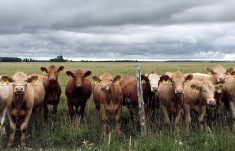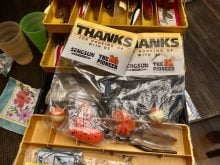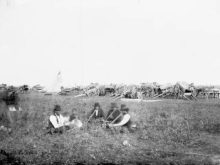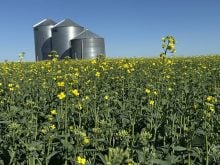As Canadian citizens, one of the phrases we should fear most in our language is “shared jurisdiction.”
That’s the weird governance ‘no man’s land’ stuck between the federal and provincial government, where both are technically responsible for an issue and neither is likely to step up.
It’s a poor dynamic, one that sets the stage for all-but-guaranteed dysfunction, as we can see by taking a quick scan of some shared jurisdictions.
Read Also

100TH ANNIVERSARY: Where does ‘co-op’ fit in the Manitoba Co-operator after a century of farm reporting?
The Manitoba Co-operator is no longer owned by a co-operative, as it was at the start of its run, but Manitoba’s farm paper still reflects the spirit of co-operation that built this province
Few would argue that Canada’s health care system, for example, is in the best of health. In fact, by many metrics, it’s in the intensive care unit. Provinces blame the feds for failing to provide adequate funding, while the feds say they’re already spending billions and the issue is with how the provinces administer it.
The other key area of shared jurisdiction in Canada is agriculture, where federal and provincial ministries both oversee this vital sector of the national economy. The issues here are well documented, with plenty of buck passing and finger pointing when it comes to making policy, designing programs and funding them.
One might think it would be better to be firmly in one camp or the other. And that’s a valid question to ponder, but at least there are established systems and precedents to give some indication of how to untangle these problems.
Consider what it might be like if a stakeholder found themselves in a de facto shared jurisdiction situation while being legally considered the responsibility of one group.
That’s exactly the situation where Indigenous Canadians frequently find themselves. Due to the nature of treaty agreements, they’re officially considered to be a federal ‘responsibility,’ as patronizing as that word may sound.
But they, like the rest of us, live and work in provinces. That means they’ll have many of the same issues every other Manitoban faces, but often they have less access to resources to address those issues.
[RELATED] ‘Indigenous Voices – Sharing our Agricultural History and Journey’
Or, if they are legally entitled to the resources, they may run into confusion, indifference or an overwhelmed bureaucracy. That’s what Geralyn Wichers found in her story for the cover of our Nov. 3, 2022 issue of the Co-operator where she talked to Indigenous cattle producers who lived through the BSE crisis.
At the time, they say they attended meetings, applied to programs and generally jumped through the same hoops as other farmers did, only to be told they didn’t qualify.
So, if you’re keeping score, these farmers were bureaucratically frozen out twice. Not only were they stuck in the perpetual tug-of-war of federal-provincial agriculture jurisdiction, but they had the added hurdle of trying to convince two levels of government that they qualified, while those governments side-stepped the issue.
With the entire Manitoba cattle sector in crisis back then, it was the last thing these families needed. The fact that many Indigenous producers now begin with a baseline assumption that they won’t qualify, for whatever programs are out there, is a real problem.
Not to put too fine a point on it, Indigenous Manitobans are dramatically under-represented in the agriculture sector. There are, give or take, about 200,000 Indigenous Manitobans. A 1999 survey found just 73 First Nations cattle farmers in Manitoba, and most observers say it’s fallen since then. That’s compared to about 6,300 cattle producers in the province as a whole, with a total population nearing 1.3 million.
[RELATED] Back to the land: ‘We used to plant hay here.’
Increasing the number of Indigenous farmers isn’t just a question of fairness. An industry with a greying demographic and serious labour challenges, as agriculture has, should look at Manitoba’s Indigenous citizens as potential partners to solve these issues.
There are early and hopeful signs. Assiniboine Community College, for example, is offering a tuition-free agriculture equipment operator training for Indigenous students. Agriculture Canada’s Indigenous Agriculture and Food Systems Initiative, aimed at increasing economic opportunities in the food production space, has seen high demand. And Farm Credit Canada, the largest agriculture lender in the country, has committed to working with Indigenous farmers both on and off reserves.
That last one is key, because reconciliation won’t come from making Indigenous kids into farmhands. It will come through clearing the path for their own entrepreneurial efforts and giving them the same opportunities and support as everyone else.
It’s support they deserve, and would put them on the same level as others in the sector.
Why wouldn’t we want to see people who live, work and build in rural Manitoba succeed on the same footing?















